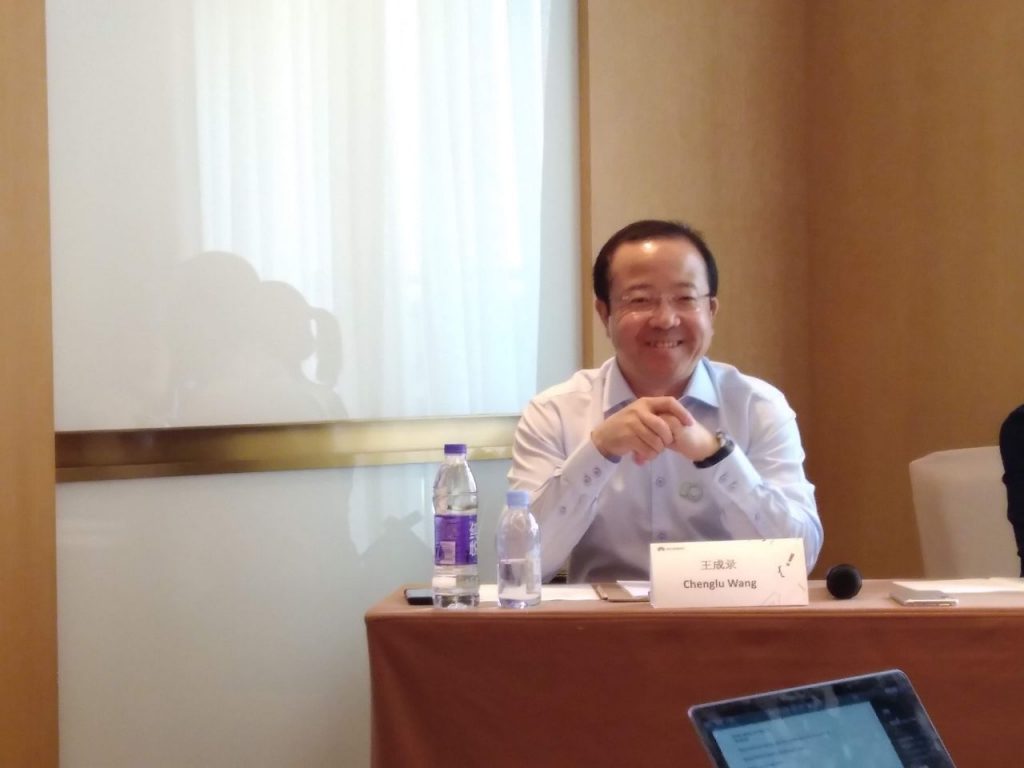During the Huawei Developer Conference 2019 held this weekend in China, a media round-table to discuss EMUI10 quickly changed topic to discuss the future everyone wants to know about – how will Huawei survive if it loses access to Android, and what plans does it have in place?
Dr Wang Chenglu, president of Huawei Consumer Software division, took questions from the floor about EMUI, but quickly the discussion turned to HarmonyOS, Android, Google, security and privacy. It was a spirited discussion, and for once, one without minders on hand to steer conversation back to approved topics. In many years covering Huawei conferences and the like, it’s a rare scene.
The first question set the tone – on whether EMUI10, which is based on Android Q, would share any design with HarmonyOS if it were deployed to smartphones. The answer was a fairly brief “yes” – despite EMUI and HarmonyOS being entirely separate teams, the hope (if not the current delivery) was that regardless of an Android or HarmonyOS underpinning, the software experience for the user would be the same or very similar – Huawei is cautious not to alienate its existing user base with wholesale UX changes.
In discussion about Android, it became clear that Huawei doesn’t see its EMUI as merely a skin on top of Android – rather, it sees EMUI as its own operating system built around Android – more of a fork than a vendor skin. Objectively, this was hardly surprising, but it is an unusual step to see a vendor confirm this.
There had been contradictory messaging about what happens if Huawei becomes unable to access Google, Android or other American products. While there had been a consistent message that Huawei wants to – where at all possible – continue to work with Google, and use Android in its smartphones, if it cannot, there is a plan to switch to HarmonyOS. This much is not news.
However, what was news is that Huawei has reached a commercial agreement with Google – executed under the current regime of temporary reprieve – to guarantee the Chinese giant access to Android Q for its current and in-development smartphones. This means that not only will Mate 30 launch in the next month or two with Android Q, but Android Q will also become available for existing users including P30 Pro and Mate 20.
So, while Consumer CEO Richard Yu claimed HarmonyOS could be ready for smartphones in as few days, other executives walked back from that claim, stating that even in the worst case, HarmonyOS would not likely be seen on smartphones for at least 12 months, as the guaranteed access to Android Q made this unnecessary.
Further still, should there be a change to HarmonyOS in future, current devices will not gain access to this – they will remain on the latest Android version available for them at the time. This means that the P30 Pro, released with Android P, will (almost certainly now) see an update to Android Q, but if relations between Huawei and the US sour, Android Q might be where it stops.
On this topic, we asked Dr Wang about Android security updates should access to Google licensing be cut off. Dr Wang believes that most of the critical security patches are available in AOSP, and even with an Entity Listing in force, Huawei is able to access the open source repository and create its own security patches as necessary, relying on its own development teams as needed to make that a reality. In short, he reassured existing customers not to be at all concerned – their privacy, data protection and security remained Huawei’s utmost priority, and security would be taken care of regardless.
Dr Wang acknowledged that Huawei faced impediments to its dream of HarmonyOS becoming a widely adopted smart platform (and not just on smartphones) – as much of the development was carried out by Huawei in Chinese language, documenting APIs and so on would prove somewhat slower than other open source projects based in English language countries. However, he saw this as an impediment only, not a barrier, and said that should it become necessary, HarmonyOS would be embraced by the international open source communities.
Whether that its ultimately true or not, smartphone users probably don’t and need not care. Current generation devices will continue to have access to Google services, a major OS update, regular security updates, and some of the best hardware available today. If there’s nothing else that’s come out of this developer conference, that’s the only news most will care about.





